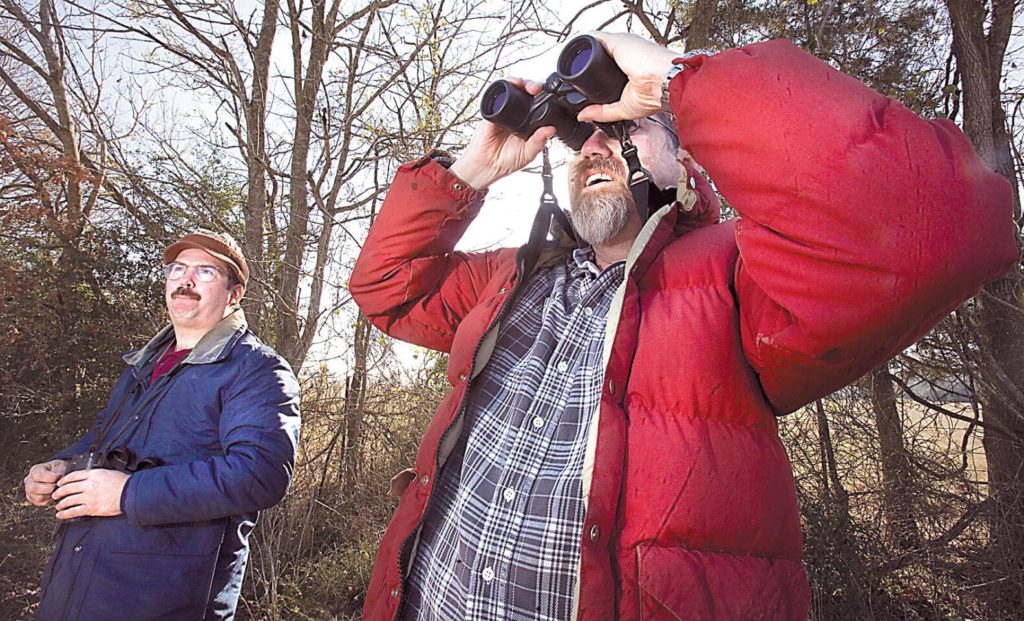This winter, bird-watchers throughout North and South America will join forces to participate in the Christmas Bird Count. The annual event is sponsored by the National Audubon Society and is dubbed by the organization as “the nation’s longest-running community science bird project.”
Volunteers for the Christmas Bird Count meet in teams and look for birds in designated circles that are 15 miles in diameter. All birds in each circle are counted and results are used by the Audubon Society to monitor bird populations
This year marks the 122nd Christmas Bird Count. Each count occurs during a 24-hour period and can take place from Dec. 15 through Jan. 5. According to the Audubon Society, there are over 2,600 count circles and over 81,000 volunteers. In Texas alone, there are more than 110 count circles.
The first Christmas Bird Count was on Christmas Day in 1900 and was organized by Frank M. Chapman to bring visibility to wanton destruction of wildlife. Prior to the advent of Christmas Bird Counts, families and friends would choose sides for a day of competitive hunting. Hunting teams that harvested the most animals (birds and mammals) were declared winners.
The first Christmas Bird Count included 27 birders in 25 counting areas from multiple states and provinces. No counts occurred in Texas. Those original volunteers counted 89 species and more than 18,000 individual birds. These totals are a paltry number by today’s standard, but it was a start.
Only California and Ontario have more annual counts than Texas. Christmas Bird Counts in Texas are always among the top-ranking counts in the United States. In 2019, volunteers at the Mad Island Marsh Preserve in Matagorda County tallied more species (229) than anywhere in the United States. Four of the top 10 Christmas Bird Counts in the United States occurred in the Lone Star State.
The Christmas Bird Count in Bryan-College Station is organized by the Rio Brazos Audubon Society. Our circle is calculated from A&M Consolidated High School and extends into Bryan, Wixon Valley, south College Station and eastern Burleson County. Over the past 10 years, volunteers have averaged 118 species in the Bryan-College Station Christmas Bird Count. The average number of participants during that period has been 56, and the average volunteer hours per year has been 97.
The Bryan-College Station Christmas Bird Count will be held on Dec 18. Some teams will arise before dawn to listen for birds that are most active at night. During these predawn hours, local birders have regularly tallied Eastern screech owls, barred owls and great horned owls. Volunteers typically wind things up late in the afternoon.
Participants in the Bryan-College Station Christmas Bird Count have historically come together in the early evening for a potluck chili dinner to compile their respective lists. Teams compare their totals and swap stories. Post-count dinners are a great way to celebrate citizen science and warm up after being out in the cold.
Data from the Christmas Bird Counts are used by many organizations to gauge bird populations and to guide their conservation efforts. A 2012 report issued by the Environmental Protection Agency used Christmas Bird Count data as one of its 26 indicators of climate change. Sadly, the numbers of birds continue to decline. According to a 2019 report published by the Cornell Laboratory of Ornithology, there were nearly 3 billion fewer birds than were counted in 1970 — a staggering number.
Scientists have documented several factors that contribute to the loss of bird populations, including habitat loss and degradation, climate change, collision with glass and other structures, and the spread of pesticides and other toxins. The decline of bird populations is a source of concern for scientists, conservationists and bird-watchers. Many people derive great joy from watching and listening to birds. Also, birds are high up in the food chain and are a good indicator of the health of our planet. As one report noted, “When they start disappearing, it means that something is wrong with our environment and that we need to take action.”
One way to take action is to become involved in organizations like the Rio Brazos Audubon Society. Annual monthly meetings, field trips and other events — including the Christmas Bird Count — are great ways to familiarize yourself with birds and various threats impacting them. Getting to know birds and counting them with like-minded individuals is also a great way to enjoy the holiday season.
Jackie Girouard is a retired programmer/analyst with the U.S. Department of Labor and has been a member of the Rio Brazos Audubon Society for 17 years. She has participated in the Christmas Bird Count since 2007.

